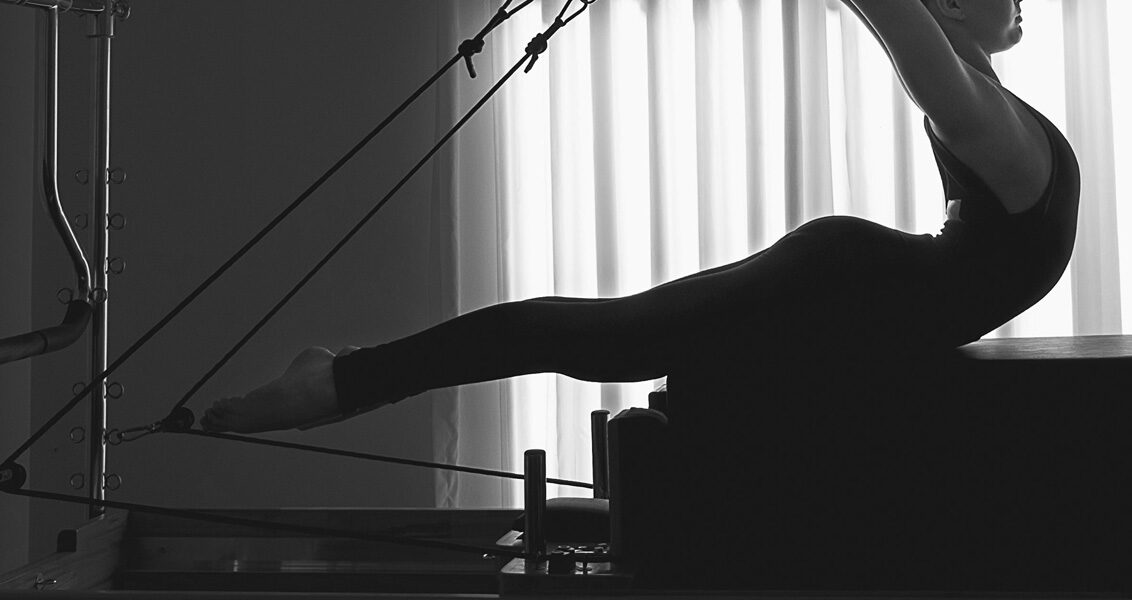
No, they aren’t torture devices, but with so many straps and ropes—and friendly names like “the Guillotine Tower”—Pilates machines can certainly seem scary. But don’t let that stop you! Originally developed to promote movement during injury rehab, Pilates machines offer low-impact exercise that almost anyone can do. With a little practice and the watchful eye of an instructor, you can use the five main Pilates machines to dramatically improve your balance, strengthen your core, and increase your flexibility.
Strap In: Pilates Reformer
This is the machine with which you’re probably most familiar. Quickly becoming a mainstream exercise tool, the Reformer has made its way to many gyms and studios across the country. This bed-like, wood-framed structure uses springs, pulleys, cables, straps, and bars to create resistance. It’s designed to lose resistance at specific moments during an exercise, so your core has to work harder to support you.
It’s Killer: Pilates Tower (a.k.a. the Guillotine)
Often attached to, and used in conjunction with, the Reformer (as shown here), the Tower uses a push-through bar, roll-down bar, leg springs, and arm springs for resistance. Because it allows practitioners to focus on one body part at a time, this machine works especially well for beginners or those with injuries.
Take a Seat: Pilates Chair
The Chair, also known as the Wunda Chair, traditionally consists of a wooden box with a spring-resistance bar on one side. Newer versions of this chair are lighter and more streamlined, but the overall design and purpose remain the same. Like the Reformer, the Chair allows users to perform exercises in multiple positions that help improve stability and flexibility.
Put Your Back Into It: Pilates Ladder Barrel
It might look like a padded mailbox with a sliding fire escape, but the Ladder Barrel actually helps strengthen the back, shoulders, and core. The only machine on this list that doesn’t use springs, the Ladder Barrel instead employs gravity as the main source of resistance. The ladder rungs and sliding base help accommodate varying heights and fitness levels, making the use of this machine appropriate for both rehab therapy and advanced Pilates practice.
Shift into Overdrive: Pilates Cadillac (a.k.a. the Trapeze Table)
This machine is the ultimate Pilates convertible, complete with all the bells and whistles. Perhaps the most intimidating of all the machines on this list—yes, even more so than the Guillotine—this six-foot-long padded table has parallel bars (think gymnastics), arm springs, leg springs, a push-through bar, fuzzy loops (not these), and a trapeze. Best suited to private instruction, the Cadillac breaks long motions into shorter pieces to isolate muscle groups and restore correct patterns of movement.
Ultimately, Pilates is a system; the machines are meant to complement and enhance regular mat exercises. But the machines provide a great mechanism for learning how to perform the exercises correctly, thus allowing exercisers to perfect their form and prevent injury. The machines also give users a way to identify and improve upon their strength imbalances and alignment issues. Plus, machines allow for modifications that aren’t possible in mat Pilates, making it easier for beginners or those with injuries to practice Pilates safely. Whether you’re an advanced Pilates exerciser looking to amp up your results or a recreational athlete ready to round out your routine, Pilates machines offer an excellent addition to your workout.


